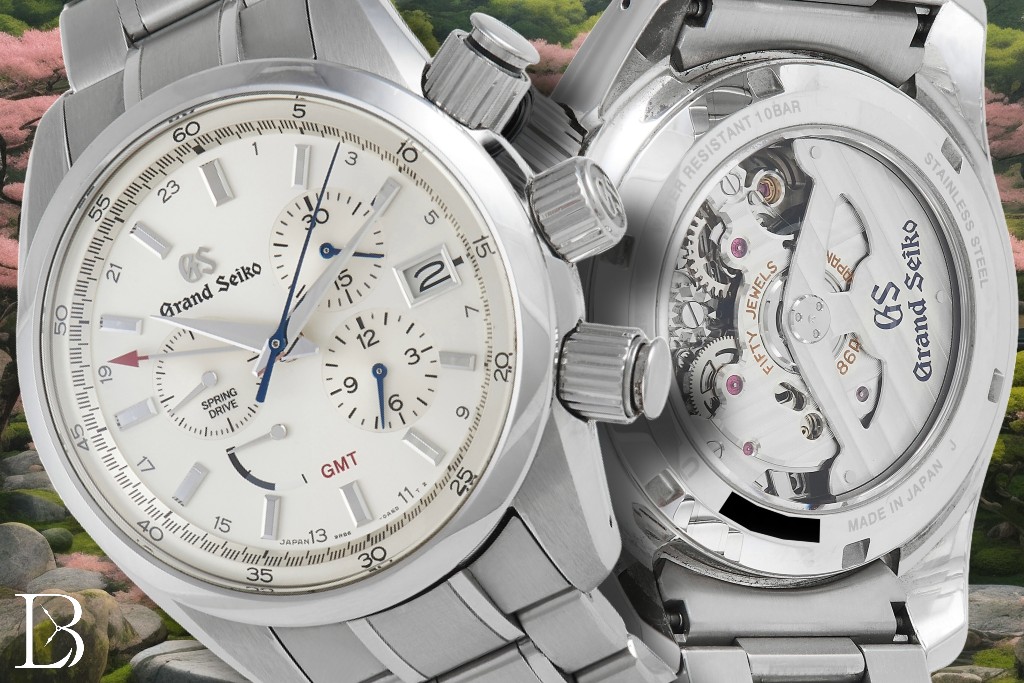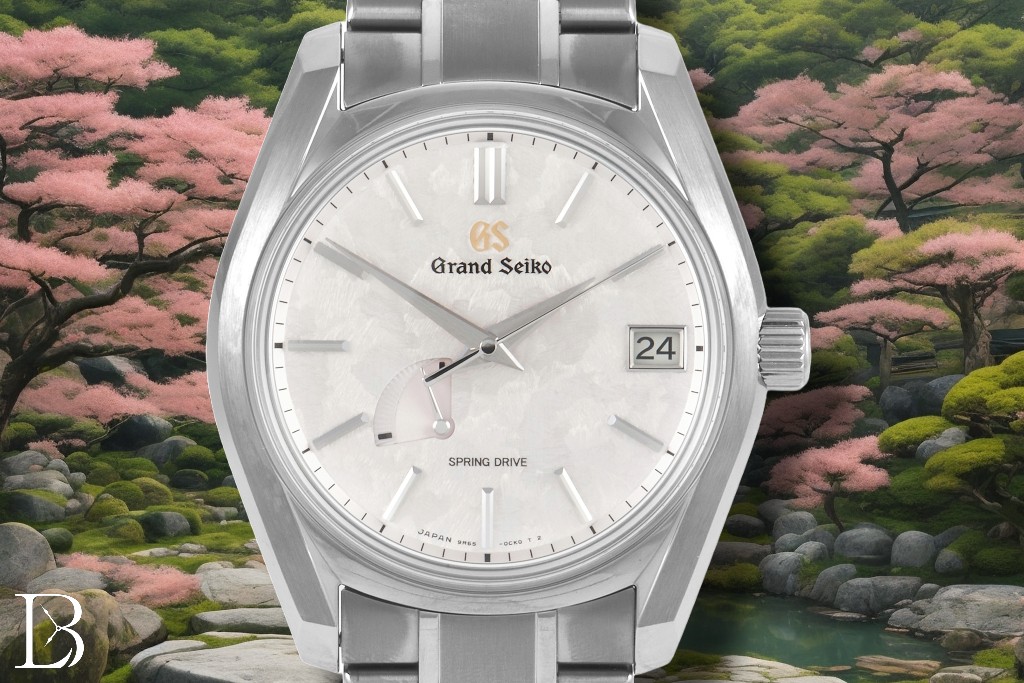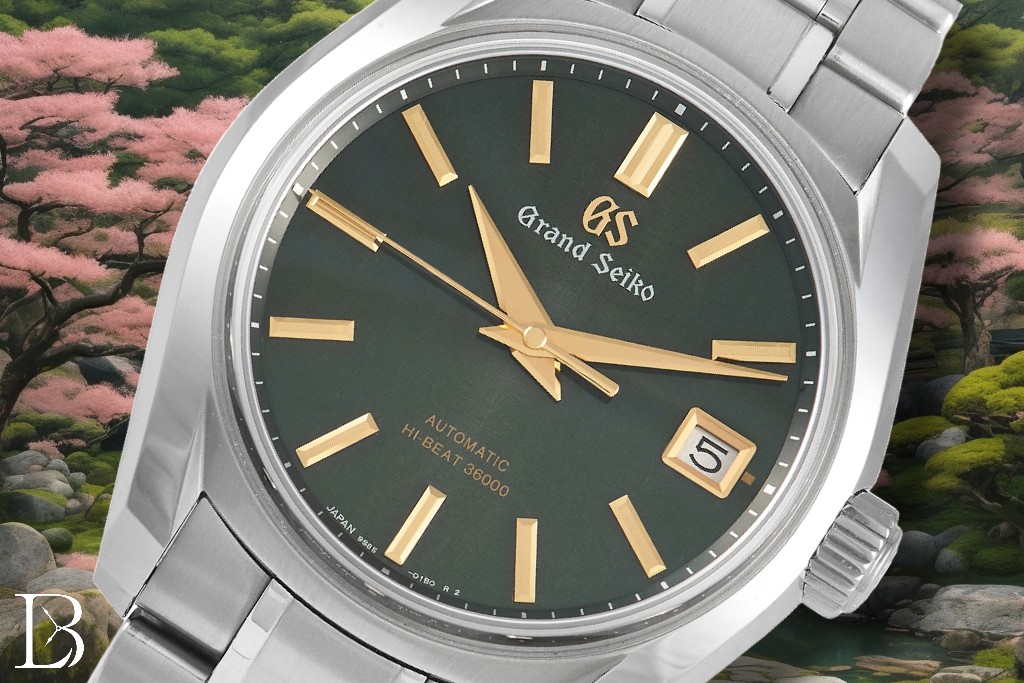Grand Seiko’s very existence as a top-tier luxury watch brand is contrary to a lot of conventional marketing wisdom. “They should call it something other than Seiko, because I think ‘cheap’ when I think of Seiko” some say. But Grand Seiko has just been doing their thing, consistently releasing extremely high quality watches with Rolex-like price tags, and proving the doubters wrong year after year. As a historical sidenote, the outstanding performance of Grand Seiko watches basically embarrassed the Swiss watch industry so much that they stopped having timekeeping competitions at the Neuchatel Observatory in the 1970’s. I have a ton of respect for Grand Seiko and I own a few of their watches, but following their releases is more chore-like than it should be. Read on for my take (rant?) on why Grand Seiko should organize their product lineup more coherently.

Give Me Something to Call the Watch
Think about it like this, Grand Seiko: What would a real-life person say if a fellow watch enthusiast asked them what watch they were wearing? If I were wearing my SBGE009, and a watch collector said “what kind of Grand Seiko is that?” I would probably say “a Spring Drive GMT with a golf-ball-lookin’ dial.” It’s a Spring Drive, and it’s a GMT, but it doesn’t have a name. I wouldn’t say “a GMT from the Heritage Collection” or whatever collection it’s from (who knows). Because nobody actually thinks about them like that, because the GS collections aren’t coherent enough. Grand Seikos with recognizable names–like the Snowflake and Shunbun–tend to be among the most popular.

Collection Mayhem
If you head on down to Grand Seiko’s website and click “Collections,” you can see how they’ve organized their catalog. Putting the $42,000-and-up Masterpiece Collection at the top of the page is an interesting SEO choice, given that’s probably not what most Grand Seiko fans are shopping for, but oh well. Let’s look at the absolute carnage in the collections under that.
Evolution 9 Collection?
Right off the bat, Evolution 9 is a pretty weak name. You have to dig deep to even find what the “9” is supposed to signify, which is a list of 9 design characteristics that the watch is supposed to have. But most of them are pretty generic, nebulous traits. One of the only visually distinctive and consistent traits of the Evolution 9 family is a certain fat hour hand with a long dauphine minute hand. (Except for the Spring Drive Diver, which has totally different hands because…well, because!)
Regardless, the White Birch models (SLGH005, SLGA009) are probably the hottest models in the Grand Seiko lineup right now, and yet from the Collections page I don’t even know how you would find them. The words “White Birch” don’t appear on the page and I’m not sure how anyone looking for “White Birch” is supposed to know they should click “Evolution 9.” It’s head-scratching from a marketing standpoint.
Simplification is Possible
The Heritage Collection looks pretty similar to the Evolution 9 collection, except slightly more angular I guess? Seriously, look at any watch in the Evolution 9 collection and tell me why it couldn’t also be part of the Sport collection or Heritage collection or both. I don’t even know why there’s a separate Sport collection when the other collections have sporty divers, chronographs and GMT’s too.
The Elegance and Masterpiece collections I get. But Grand Seiko collectors think in terms of movement: Spring Drive, quartz, or mechanical. Why not officially organize the collections along those lines? At the very least, the Heritage, Evolution 9, and Sport collections could easily be one collection (especially if you dropped some somewhat redundant models). And there’s something else Seiko could do to make their models more memorable.
Please Give Each Case/Movement Combo its Own 4-Letter Prefix
Watch nerds often communicate to each other in terms of a watch’s reference number (as long as it’s not too long–cough, Omega). But Grand Seiko makes this harder than it should be. If I tell you I have a Grand Seiko SBGE009, well, you couldn’t possibly be expected to know what that is without looking it up. But you could conceivably know what an SBGE is. SBGE’s are Spring Drive GMT’s, but the problem is there are lots of totally different Spring Drive GMT’s included in that. Mine is 39mm with a fixed bezel, while something like the SBGE201 is 44mm with a rotating bezel and a 4 o’clock crown.

A humble recommendation for Seiko: Make each 4-letter prefix unique to a particular case+movement combo. I think SBGE should be one “thing.” Like a 39mm Spring Drive GMT. The 44mm Spring Drive GMT’s could have been SBGQ or something. The following numbers can signify dial colors and bracelet styles, but the letters should be enough to denote a particular case and movement.
Let a Thing Be One Thing
This leads into my next advice for Seiko: it’s OK to let a thing be one thing. You didn’t need to release four 60th-anniversary Grand Seikos. In fact I forgot that my SBGP015 was an anniversary release until just now, when I re-googled it to remind myself of the model number. If there were only one 60th-anniversary model, then that would be the 60th-anniversary model. Let a thing be one thing. A “White Birch” isn’t even one thing anymore; it used to just mean ref. SLGH005 but now there’s an SLGA009 model White Birch which is basically identical except for a different movement. I mean, why?
I mentioned how well the Snowflake and Shunbun have done as identifiable references with names. But now GS has added two sizes of Snowflake Quartz. Their marketing department seems to have very little regard for the concept of brand dilution, but we’ll see how that goes. Another example of Seiko (mostly) getting it right is the Mt. Iwate dial texture. It was exclusive to Hi-Beat GMT models with 44GS cases. They made several different colors of it, but that’s fine. I could say “I have a maroon Mt. Iwate” and that would tell you the exact watch I have without any need for memorizing letters and numbers. Except they later released an online-only non-GMT maroon Mt. Iwate model (SLGH345). Their choice of new additional models just seems so random sometimes.

The “Whirlpool” GMT ref. SBGM235 is another favorite among collectors. There were only a couple other models made with Whirlpool dials, and while choice is usually a good thing, it would seem less special if that texture was available in a million configurations. It’s easier to get a grasp of a product lineup when one particular aesthetic is specific to one model family. You don’t need to offer every type of dial and movement in every type of case.
Wacky Corporate Structure
Something people don’t talk about much is the fact that Seiko has a bizarre, complex corporate structure. Seiko Epson is known for making all the Grand Seiko Spring Drive and quartz movements, but they’re not part of Seiko Corp. In a previous form they used to be, and Seiko Corp. still owns 10% of their shares, but they’ve been a legitimately separate company for a long time now. And they make more than just movements: “We craft our own cases, dials, hands, and other external parts,” Epson.com claims.
But clearly Seiko Instruments (maker of mechanical Grand Seikos like the Hi-Beats) and Seiko Epson are selling each other dials and cases and cooperating on releases under their shared Grand Seiko brand; it’s just a weird combination of competition and cooperation that I don’t quite understand. And that setup probably makes it harder to make a thoughtfully planned product catalog. But, they should still try. I think the sky’s the limit for Grand Seiko if they can curate and organize their lineup just a bit more coherently.

Less Options Can Be Better
Desire for a particular watch can sit at the back of your mind and fester. But it’s less common to have a burning desire for “any of those eight similar Grand Seikos; they all look nice.” Especially if you don’t even know what name to call them. Serious watch collectors often like to get a grasp of a brand’s offerings before they decide which one is their favorite, and GS makes it hard to get that intuitive “grasp.” But hey, it’s possible that one of the oldest and most successful watch companies in the world knows what they’re doing and doesn’t need my help. Regardless, I wish Seiko all the best, and I hope they never run out of regionally-specific Japanese visual phenomena to name their dials after.
More articles that mention Seiko:
Patrick Bateman’s Watch in American Psycho: A Seiko
Wristwatch History: A Timeline of Horological Firsts
Watches and Wonders 2024: Everything to Know
Omega Speedmaster Alternatives: Chronographs From 12 Other Top Brands

